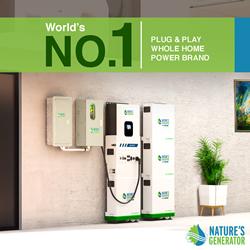Sunrun, OutBack Power Pilot Renewable Energy Storage Systems For Homeowners
Why Is There So Much Confusion About "Small Wind"?
Battery Backup for Rooftop Solar Power Systems Too Costly
Solar Power International underway in Las Vegas.
Lockheed announces major breakthrough in nuclear fusion
SPI 2014: 600 exhibitors and 15,000 visitors expected
SolarCity's CTO Peter Rive on Solar Power Plus Energy Storage
Palen solar power project near Joshua Tree scrapped
Why Solar Power Is Taking Off At Airports Across The Country
Wind power needs subsidy to compete in US, says Siemens
A solar cell that stores its own power: World's first 'solar battery' runs on light and air
Solar Energy Storage System For Homes and Businesses Unveiled
Perovskite Offers Shot at Cheaper Solar Energy
SCE Unveils Largest Battery Energy Storage Project in North America
US, California Release Roadmap for Solar Projects
Records 1441 to 1455 of 2279
First | Previous | Next | Last
Featured Product

